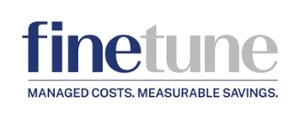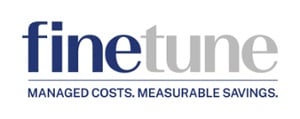Maximizing Savings Opportunities and Procurement's Strategic Value for CPOs
Saving money is not always about pinching pennies: advanced and data-driven insights enable you to identify real cost-saving opportunities, negotiate...

In the realm of modern business operations, procurement has evolved from being a mere transactional process to a strategic function that directly influences a company's success. Central to this evolution is the concept of planned work in procurement. This article delves into the crucial aspects of planned work in procurement and why considering procurement orchestration is valuable. We’ll highlight the significance, benefits, and the strategic advantages of automating planned work.
Planned work in procurement refers to the work emanating from known projects needing to be completed during a said period of time. Some companies call this an Annual Operating Plan (AOP) where all the work that’s not reactive is laid out to be prioritized, coordinated, resource allocated and executed.
Unlike ad hoc procurement, where requests originate from business users in a reactive manner, planned work involves proactive identification, planning, establishment, and execution of procurement projects based on priority and resources on hand. This approach allows companies to anticipate and address their procurement needs in a more structured and strategic manner. Planned work is where the lion share of value is generated in the form of both financial & non-financial benefits.
Executing planned work requires a comprehensive procurement plan which serves as the foundation to achieving success. This comprehensive document outlines the activity types, strategies, methodologies and resource requirements to deliver against the total volume of work for the course of the year. Key elements of a procurement plan include:
Activity Types: Knowing what work types you’ll include in the annual operating plan is the first step to orchestrating planned work. There are standard activity types that make up planned work within all companies. These can include; contract renewals, category tenderings, supplier updates, revalidation rerating and more. These activity types may require multiple resources but will almost always require departmental/stakeholder collaboration to complete. Having line-of-sight to all the work types and the volume of each is critical to staffing and assuring you’re able to complete this work. In addition, there are always corporate projects that need to be planned for, like making sure all contracts are updated with the latest privacy or intellectual properties language (just as examples), these things will also consume time and effort of the procurement team.
Timeframe Determination: Activity types can have predetermined workflow(s) and timelines to completion based on variables linked to each. This allows for understanding the effort, resources, stakeholders and departmental requirements for work. Establishing timelines by project type helps to determine staffing requirements not only preventing operational disruptions.
Resources: No matter who, why, when, where or what planned work is done it requires procurement professionals. These professionals are highly skilled and experts at their trade. As a whole resources have limitations to the sheer volume of work they can effectively handle. Having the right people on teams doing the right work matters and having clarity to all the work types and volume or work for each type allows you to staff accordingly. Process control technology drives process efficiencies by speeding up cycle times allowing teams to do more work. Having the new data points allows you to know the volumes and resource types you need in advance as well as train existing resources based on performance.
Strategies & Methodologies: By knowing in advance all the work to be completed in the coming year allows you to prepare well in advance to maximize the value your team can deliver. Identifying strategies or even using technology to recommend approaches to get the best outcome requires planning because some strategies are more comprehensive than others. Oftentimes there are multiple strategies and methods to attain both financial and non-financial benefits from a project. Carving a path to value is essential and requires awareness, understanding, and access to information. Orchestration tools can bring in data points and process steps that otherwise may be missed or overlooked.
Cohesive applications: Having connected solutions matters, because with the advent of Procurement Orchestration SaaS, the activity record becomes the activity cockpit for execution. Having tight integrations allows the project leader to see any and all data essential data elements from any systems within a company's tech stack or third-party data content. In some Procurement Orchestration SaaS platforms, like Focal Point, CLM & Supplier functionality is an optional module eliminating need for integrations to those modules.
As part of orchestration functionality, workflow and/or project management features smooth cross department collaboration streamlining approval(s). Connecting solutions through APIs allows other departments to use their required systems as part of completing their activity requirements without them even knowing they’re part of another workflow. Thereby this seamless push/pull of data and status creates an experience where there’s no need for collaborators to update workflow or project records. When steps within a workflow demand use of third party content providers (Supplier IO, RapidRatings, etc..) API’s to those systems speed up standard tasks eliminating the need to go from system to system to find information then add to a project record. This may be one of the greatest tech advancements making procurement orchestration truly viable and advantageous.
Planned work is where the biggest rocks of value are hidden within any procurement organization. I mean this in two ways: first, is the value derived from gaining control, management and visibility to activity in its entirety. Listed below are examples of areas of impact. Secondly is the automation of benefits tracking/management. Benefits show up as both financial, such as hard savings or cost avoidance and nonfinancial, like increasing the percentage of diverse suppliers or reducing a supplier's carbon footprint. By wholly managing planned work benefits tracking becomes automated and real time vs. the old snapshot in time when done manually on spreadsheets. Even proactively assessing suppliers/vendors can allay risk that otherwise could rear itself at some future date with an unknown cost. Benefits will appear as either financial or non-financial gains,
Cost Efficiency: Planned work in procurement enables companies to negotiate better deals with suppliers due to the foresight provided by a structured procurement plan. This can lead to reduced costs and increased cost predictability.
Strategic Decision-Making: By anticipating future needs, procurement teams can make informed decisions about sourcing strategies, thereby maximizing the value derived from suppliers.
Process Adherence: Planned work enforces consistent procurement processes, reducing the risk of ad hoc decisions that might deviate from established procedures.
Supplier Relationship Management: A proactive approach to procurement fosters stronger relationships with suppliers, leading to improved collaboration and potential long-term partnerships.
Resource Allocation: Proper planning ensures that resources are allocated efficiently, reducing wastage and improving overall operational efficiency.
Data, Data, Data: By automating planned work with orchestration technology you become armed with valuable data that can be leveraged for strategic decisioning. CPO’s will now have details allowing them to make more strategic decisions and have more confidence in reporting and commitments.
Improved Business User & Stakeholder Satisfaction: Anticipating business stakeholder needs and ensuring timely procurement of necessary resources enhances overall stakeholder satisfaction. Giving visibility to these folks creates harmony and assures embracing procurement as a partner.
The strategic advantage of planned work in procurement is its ability to align procurement activities with broader business objectives. By anticipating and addressing the needs of the organization in advance, procurement teams contribute to the company's overall competitiveness and operational resilience. This proactive approach positions businesses to respond effectively to market changes, demands, and challenges.
In the dynamic landscape of modern business, the significance of procurement planning cannot be overstated. Planned work in procurement transforms the function from a reactive necessity to a strategic enabler. By adopting this approach, companies gain the ability to anticipate needs, save costs, enhance supplier relationships, and make more informed sourcing decisions. As businesses continue to seek ways to optimize their operations, the integration of planned work in procurement emerges as a crucial step towards sustainable success.

Saving money is not always about pinching pennies: advanced and data-driven insights enable you to identify real cost-saving opportunities, negotiate...

The topic of our recent roundtable discussion with a dozen Procurement Foundry community members—exploring potential flaws in procurement incentive...

Every 30 days or so, I get the same alert on my phone—“Your electricity bill is available for viewing.” I take a quick look, make sure nothing seems...